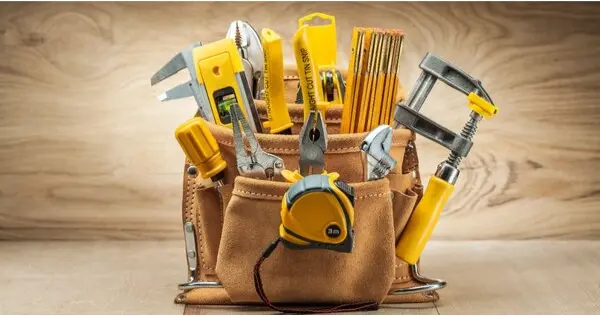Many hectares of forests are decimated each year by wood rot, also known as wood decay, which is caused by various fungal species like brown rot, soft rot, and white rot. A fungus invasion will cause wood to seem discolored, wither away, and have a light, soft, crumbly, or powdery appearance. On the forest floor, fruiting structures known as "conks" will form along the trunk and branches of diseased trees, and mushrooms may begin to grow at the base of the trunk or in areas where the tree has been injured or damaged.
You might not notice your home's facets fading until it is too late because the degradation process doesn't start immediately but takes many years. In the natural world, diseased and dead branches are cut down, while young trees are wrapped to protect them from rot.
Deck, fence, siding, fascia, and window sill repairs are among the locations that are prone to wood rot in your house. No matter how severe the wood rot is, it is best to take care immediately.
Our Professional Marietta Wood Rot Repair Services
In the real world, however, it requires a little more effort because your Marietta handyman must completely remove any rotten wood before attempting a repair, typically done with a fake replacement like softwood polyester or a wood patch. Any damp wood component exceeding the 20% moisture threshold starts to deteriorate at the core and spreads quickly.
In either case, we wouldn't outright disregard a wood rot repair because doing so might result in long-term structural damage, your home falling under you, and long-term negative health effects from mold and mildew growth. To make matters worse, since wood rot damage isn't considered abrupt or accidental, many standard home insurance policies don't cover it.
Types Of Wood Rot
Brown Rot Or Dry Rot: Wood that has dry rot is more prone to drying out because the fungus that causes it enters the wood and destroys its cellulose, causing shrinkage. As a result, timber supports for large objects, such as your laminate, decks, and ceiling beams, will start to deteriorate. because wood rot can spread. Here are a few indicators of dry rot:
- Damp or decaying timber
- Fine and fluffy white mycelium, a thick network of fungal threads, which grows from a single spore
- Deeper cracks in timber brain
- Brittle or crumbly wood
- Soft, fleshy fruiting bodies
- Discolored patches of orange-brown spore dust
- Odd or musty odors
White Rot: Despite being less prevalent, wood is made of lignin, a polymer that binds the wood's cells to give it its inherent stiffness. In addition, once the fungus has easily entered the wood, it consumes the lignin and strips away the deeper hues, leaving a softer, sponge-like texture.
Soft Rot: The secondary cell walls of the wood are penetrated by fungus and bacteria in soft rot, which decomposes wood much more slowly than dry rot or white rot. Soft rot attacks the cellulose before devouring the lignin, taking a slow but sure approach. Although less dangerous than its cousins, it's a hassle to leave it as is because, eventually, enough will gather to compromise the structural integrity of your property.
Our Verified Installation Process
When exposed to moisture from a leaking pipe caused by a sewage backup or overflowing gutters that splash on the siding of your home, wood eventually begins to rot. Unexpectedly, simple ways to remove and replace rot, such as epoxy, wood filler, or wood patches, make it simple to treat wood rot. Here are some of the measures we take to use epoxy to fix wood rot:
- Remove And Discard: By carefully chiseling away at the edge of the rot with a hammer's claw, our skilled technician will entirely remove the area home to the loose piece of decaying wood. We shall cautiously apply pressure not to harm the sound wood in your immediate vicinity.
- Router Away: We'll remove any remaining rot using a router tool and a V-shaped bit to guarantee that the strong, healthier wood underneath is exposed. This step is essential because any rot residue that is left behind can contaminate and start to spread.
- Sand It Off: Any remaining residue on the wood's surface will be scraped off using a paint scraper or coarse sandpaper so that any additional coats or patches we apply will easily adhere to the smooth and clean surface.
- Time To Coat: Next, we'll generously treat the selected region with a few coats of wood restorer. We'll let the area dry for at least two hours before patching the area with an epoxy solution. We'll let it dry for a few minutes between coats to allow it to set.
- Bonding: Now, we’ll paint the wood with a bonding agent using a brush.
- Epoxy 2.0: Then we’ll apply epoxy to fill out the entire rotted area by mixing both parts until there is a solid color using a gun applicator.
- Shape Up: With a putty knife, we will now shape the epoxy and gently press it against the edges and into the crevice of the rotten region to set it in place. The surplus will be carefully scraped off to make the epoxy solution's edges and corners match the existing wood and create a smooth, level surface.
- Set and Sleep: We'll sand, prime, and paint it over once the epoxy has dried completely, which will take at least 24 hours. Priming and painting are essential for any outside fixtures, like your deck and fence, because of exposure to sunlight.
- Wood Patch: This is the backup or alternative way of fixing wood rot. As you can see, it's complicated and demands dexterity and accuracy that only a Marietta handyman can provide. It's also not something that should be attempted by amateurs because if any step is done improperly, the rot can readily reappear.
Why We Are Top-Of-Mind For Wood Rot Repair
Utilizing a Marietta wood repair service can prevent your home's wood components from deteriorating. Our staff at Mr. Handyman of East Marietta will bring your wood back to its former shine, whether you are in Marietta or a nearby town. If you're still on the fence, you can rest easy knowing that we provide a free consultation, on-site estimates, upfront pricing, and a one-year parts guarantee. If you're still not pleased, we'll make the necessary adjustments.
Frequently Asked Questions About Wood Rot Treatment in Marietta
What Is The Best Way To Repair Rotted Wood?
You must remove the decaying region from the original wood board or joists to repair rotten wood. After that, using a plastic putty knife, fill the surrounding region with soft wood polyester or a wood patch. Let it cure and solidify to ensure that the material will remain robust. We advise contacting a local Marietta professional for those of you who simply lack the dexterity required for wood rot repair because it will be obvious if you make a mistake with the fix.
How Do You Know If Wood Rot Is Active?
A cotton-like texture or a silky-gray growth on the wood's surface indicates that fungus is growing there. The rotting region will have spores that are a mixture of hues, such as yellow, purple, or white, which denotes the presence of mold and mildew.
Does Rotted Wood Continue to rot?
Yes, most wood rot is not recoverable and must be removed and replaced as soon as possible because the wood will keep rotting. For instance, wet rot requires much more moisture to propagate, whereas dry rot can spread even in damp or moist environments.
Crumbling Wood, No More! Call Us Today To Get Rid Of Rot!
Wood rot will spread like wildfire the longer you wait to handle it, and the repair or replacement will cost more money. Ask one of our knowledgeable handyman team members to inspect your property during one of the no-obligation consultation sessions to be proactive about maintaining the interior and exterior of your property.
Our specialist completes the task correctly the first time to prevent the deterioration from returning. If it does reappear for whatever reason, we will fix it again without charging you any more fees.
Book us online to request a service for patio and deck services in Marietta.
 Click to call
Click to call



